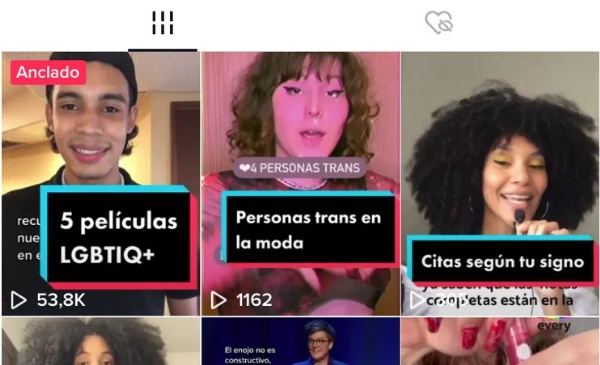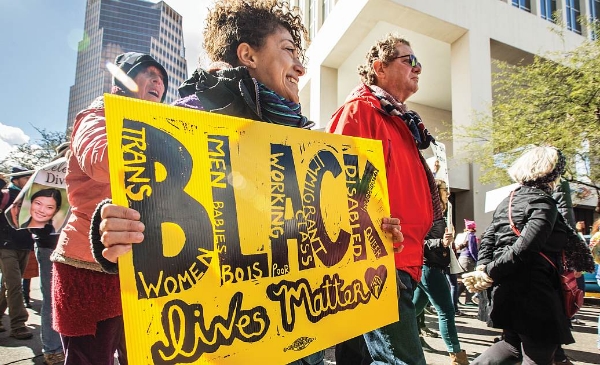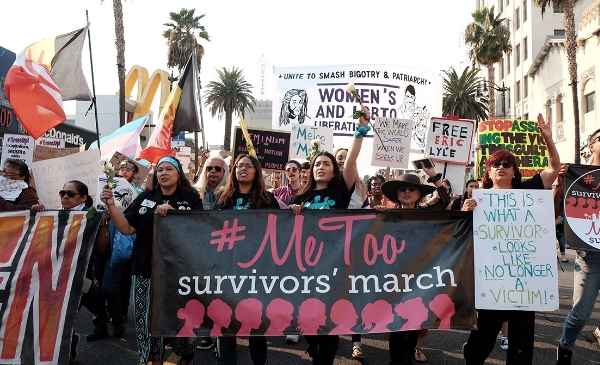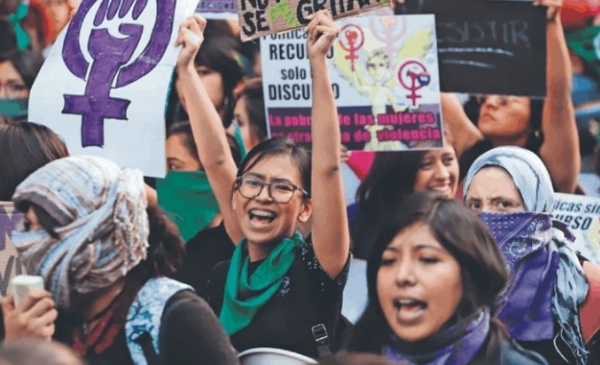Is it possible to change the world with cyberactivism? We don’t know yet, but at least there are people who are trying to do so by creating social content that has a positive impact on society. They are aware of the potential of certain applications and platforms as tools for social change.
There are many cyberactivists who, by sharing videos or posts, become, more or less actively, agents of change thanks to the way they transmit their messages. t is common to find videos on YouTube, Instagram or TikTok with this type of profile, although we must always be careful with infodemic and the phenomenon of fake news.

One of the platforms where we can create audiovisual cyber-activist content in a very quick and relatively easy way is TikTok. Those videos can also go viral and get thousands (or millions) of views. Although there is a general idea that this application is mainly used by young people as an entertainment platform, the truth is that we can find profiles that use it as a tool for social change.
Ciberactivism on TikTok
Some interesting examples are:
1. @farmaceuticofernandez:
This pharmacist is very critical with the information he finds on social networks, and he uses his profile to give advice on healthy habits and quality sex education, given the huge number of hoaxes that spread like wildfire on the internet.
He is a professional and a reliable source of information that uses humor to generate a positive impact on his followers, especially young people who, given the well-known limitations of the educational system regarding this subject, go to the Internet to find information about sexuality and sexual practices.
2. @pinkupcake6:
This Mexican girl has become one of the most important references of asexual activism on TikTok. She explains everything that has to do with asexuality and the asexual spectrum (the most invisible orientation of the entire LGTBQIA+ acronym) with great ingenuity and creativity.
This activist has generated a lot of useful and needed content that has helped and continues to help to make ace-phobia (violence, reject and discrimination against asexual people) more visible.
3. @fridaysforfuture.granada:
A group of young people from Granada (a city I the south of Spain) who have joined the international student movement Fridays For Future, born after the pacific protests started by the young Swedish Greta Thunberg. She began to protest alone in front of the Swedish parliament in 2018, with her famous poster Skolstrejk för klimatet (in Swedish ”School strike for the climate”). It was her way to insistently demand effective political actions against global warming and climate change.
Greta’s concern for the future of the youth and generations to come was picked up by cyberactivism, which channeled this environmental energy into many Instagram, Twitter or TikTok accounts. Activists began to organize protests and pacific actions around the world, with mass demonstrations of young people in the streets and the social networks.
4. @Baylen.dupree:
This young tiktoker records videos about her day-to-day life with Tourette syndrome. Her Tiktok account amasses a total of 4.8 million followers generating a much higher level of awareness and learning than any other campaign we may have previously seen about this disorder.
There are several profiles that make this kind of content in different parts of the world and in different languages.
5. @madredecroquetas:
After having overcome an Eating Behavior Disorder and being a constant victim of fat-phobic attacks, Mara Jiménez, better known as “Mother of Croquettes”, began to make very creative videos on TikTok about the violence and attacks that fat people receive. All this based on forceful answers full of criteria and humor.
Acting up as a teleoperator character in her section ”Fat people doing things, how can I help you?”, she answers fat-phobic questions and offensive comments. Her work has generating a high level of visibility and social impact regarding this topic (fatphobia).
However, Mara’s activism does not end here, as her character has been imitated on several occasions by other activists. We can currently find different tiktokers acting as teleoperators and responding to sexist or homophobic comments, imitating Mara’s dynamics so as to denounce social problems violence and spread social criticism.
This impact is even greater when those tiktoks are also shared on other social networks such as Instagram or Twitter, and when they go viral, they even get the attention of newspapers or television programs.
6. @every.lgbt:
It is a social network made by LGBT community and for the LGBT community. A news app, a place to swipe and find a friendly job, and much more.
The essential value of Every is respect, and all the ways we perceive ourselves are celebrated: Trans woman, trans man, transgender, transvestite, non-binary, fluid, genderqueer, male, female or any gender we identify ourselves with. Also, whatever our sexual orientation is, they are all respected: lesbian, gay, bisexual, pansexual, asexual or heterosexual.

Finally, one of the groups that has generated one of the greatest impacts in terms of visibility on Tiktok are trans people, who transfer their transphobic experiences to their followers, generating awareness and a broader vision of gender diversity. You can learn with them about their hormonal process, empathizing with them by seeing the comments and rejection they suffer for being trans people. Also, they expose difficulties they face before health entities or bureaucracy issues.
It is clear that cyberspace has become a global meeting space by breaking all types of temporary and physical barriers. Millions of people can get connected instantly, generate information, and spread messages massively with no more tools than a mobile phone and internet access.
Digital activism has been evolving more and more, and it is constantly mobilizing public opinion. Demonstrations no longer only take place in the streets or public spaces, but also in the virtual environment under hashtags which generate community around common values. They can even exert pressure on political groups that may get snowed by a social demand that everyone talks about because it’s gone viral.
Social movements initiated in the networks
All these cyberactivist actions have a positive impact on society and give us a very clear lesson: what is not visible does not exist. Sometimes they have even generated massive global social movements, such as:
#BlackLivesMatter movement born as a result of different racist episodes, it managed to make visible the structural racism and police brutality suffered by black people, generating protests around the world. The most recent one was the murder of George Floyd, who died after being immobilized and arrested by several police officers in the United States.

#BlackOutTuesday: George Floyd’s death led to movements like this one, which went viral on social networks like Instagram, with millions of samples of collective action against racism and police brutality went viral.
#4ofNovember: When a teenager from Bilbao named Mikel came to school wearing a skirt, a teacher sent him to see a psychologist. After this episode, the student decided to tell what had happened to him on social networks, which generated a huge movement that went viral in Spain. It generated a condemnation of gender stereotypes, harassment, or the sexualization of uniforms.
In addition to this episode, it is common to find tiktoks that break gender mandates and stereotypes, under the motto “clothes have no gender”.
#MeToo: This movement, which emerged in the United States in 2017 to denounce sexual violence in the cinema industry, quickly spread throughout all the world.

#8ofMarch: Although every year the feminist movement gains more and more support and visibility, it is common to find tiktoks of young boys and girls who not only show themselves as feminists and allies, but also denounce clearly and forcefully realities such as sexual violence or harassment that women still suffer throughout the world, among many other structural gender-based violence that still exist.
All this also reflects the commitment to the feminist movement by young people in a society that is getting more polarized on these kind of social issues.

Generally speaking, the fight for gender equality has managed to go viral through social movements replicated around the planet and organized through social networks. This is also the case of the Chilean collective Las Tesis, creators of the performance Un violador en tu camino (A Rapist in Your Path) which highlighted institutional sexism and the ferocious misogyny that affects Latin American countries.
After their first performances, the whole world echoed their condemnation, and in the following days, thousands of women’s voices began to flood the squares around the world, to the rhythm of a global and emotive sorority that highly impressed us.
During the covid pandemic, there were also actions that quickly went viral in order to denounce, for example, episodes of gender-based violence. An example was asking for the Mask19 at the pharmacy or making a specific gesture with your fist to ask for help to the followers that were watching it.
Likewise, we could see more and more videos denouncing the failures the health system has in terms of mental health and the importance of going to therapy, breaking the taboo linked to mental health and naturalizing its existence and importance
Apart form the video format, it is also possible to take advantage of the transformative potential of certain formats such as memes, making the most of humor and laughter as tools for social change. With this type of attractive visual messages, it is possible for people to feel easily identified with what is being exposed in an imagen, with a high and positive impact at a social level.
Plus, cyberactivism has also become an important tool for campaigns to raise awareness promoted by some NGOs, in order to spread messages of humanitarian aid or social emergency to the entire population, increasing social awareness through the creative use of videos or memes.
There is also a cyberactivism that is closer to cybercrime, and that has to do with hackers of certain web pages or information sources with a social purpose, such as Anonymous.
In any case, it is clear that cyberactivism is here to stay and is one of the best tools we have to keep raising awareness and fighting for a better world.
